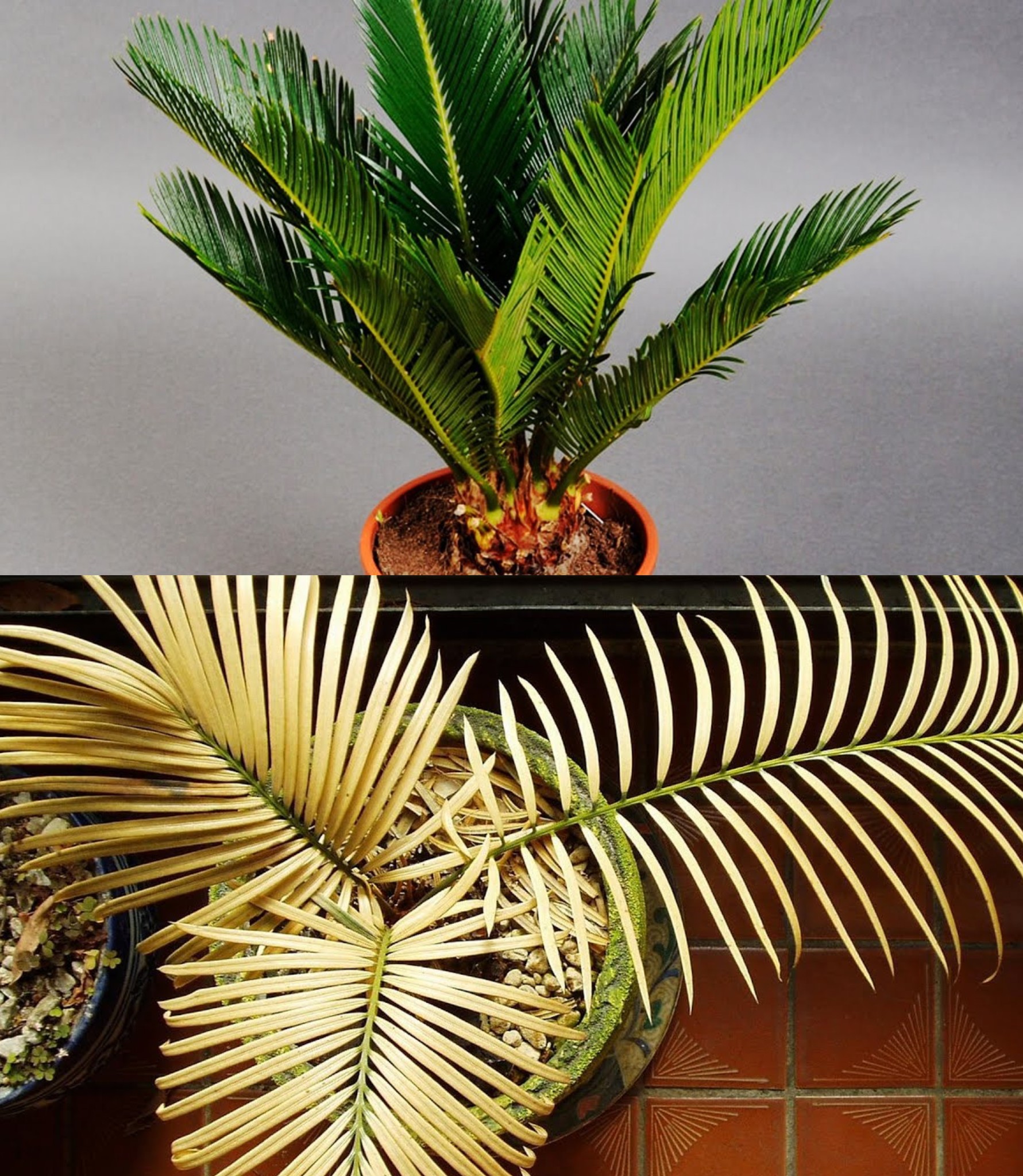
Yellowing leaves on Cycas, commonly known as Sago Palm, can be indicative of several issues, such as nutritional deficiencies, improper watering, or pest infestations. Here’s a step-by-step approach to diagnose and treat the problem:
1. Evaluate Watering Practices
- Overwatering: Cycas plants are susceptible to root rot if the soil stays wet for too long. Ensure the plant has well-draining soil and reduce watering. Let the soil dry out between waterings.
- Underwatering: If the soil is too dry, the plant may also respond with yellowing leaves. Increase watering slightly, but be cautious not to overdo it.
2. Check for Nutrient Deficiencies
- Nitrogen Deficiency: Older leaves may turn yellow if the plant lacks nitrogen. A balanced, slow-release fertilizer appropriate for Cycas can help.
- Magnesium or Potassium Deficiency: Yellowing, especially on older leaves, can also be due to a lack of magnesium or potassium. Epsom salts can be used to address magnesium shortages, and a potassium-rich fertilizer can help if potassium is lacking.
3. Inspect for Pests
- Scale Insects: These pests can cause yellow spots on the leaves where they feed. Treat with horticultural oil or insecticidal soap.
- Spider Mites: These tiny pests can also cause yellowing. They can be treated with a strong spray of water to dislodge them or with miticides if the infestation is severe.
4. Provide Adequate Light
- Cycas plants prefer bright, indirect light. Too much direct sunlight can cause leaf burn, while insufficient light can lead to pale or yellow leaves. Adjust the plant’s location as needed to ensure it receives the right amount of light.
5. Adjust Temperature and Humidity
- Cycas plants are sensitive to cold drafts and extreme temperature changes, which can cause stress and yellowing leaves. Keep your plant in a stable environment with adequate humidity.
6. Examine Soil Conditions
- Poor soil conditions can lead to yellowing leaves. The soil should be rich in organic matter and well-draining. Consider repotting the plant if the soil condition is poor or if it’s been in the same soil for several years.
7. Look for Disease
- Fungal diseases can cause yellowing and browning of leaves. If you suspect a fungal issue, remove affected leaves and treat the plant with a fungicide.
8. Prune Affected Foliage
- Remove yellow or brown leaves by cutting them off at the base with sterilized pruning shears. This can help the plant focus its energy on healthy growth.
9. Regular Monitoring
- Keep an eye on your Cycas plant after making adjustments to ensure that the yellowing does not spread and that the plant returns to health.
10. Professional Advice
- If you’re unsure of the cause or the yellowing persists, consider seeking advice from a local nursery or an expert in plant care.
Remember that it’s normal for the lower, older leaves of Cycas to eventually turn yellow and die off as part of the plant’s natural growth cycle. However, if multiple leaves are turning yellow or the new growth is affected, it’s a sign that the plant is under stress and needs attention.
